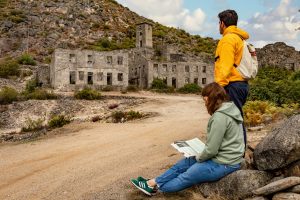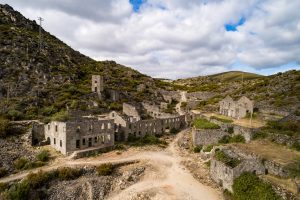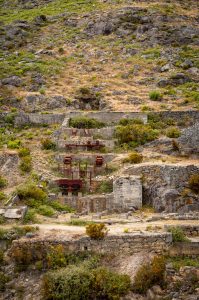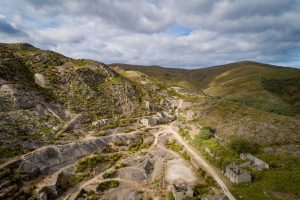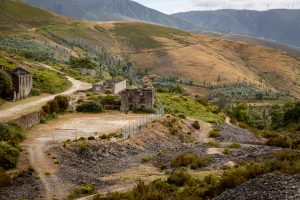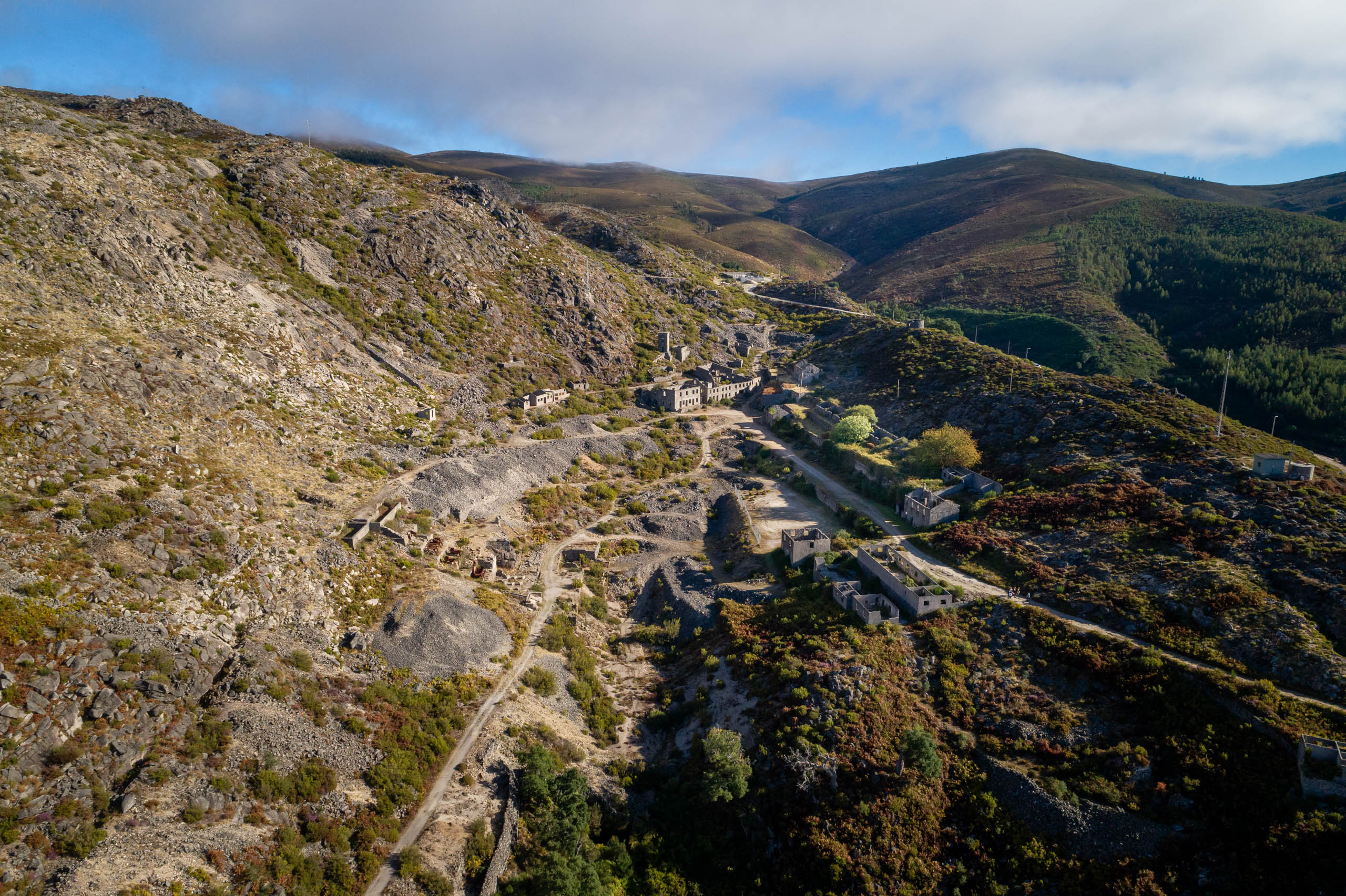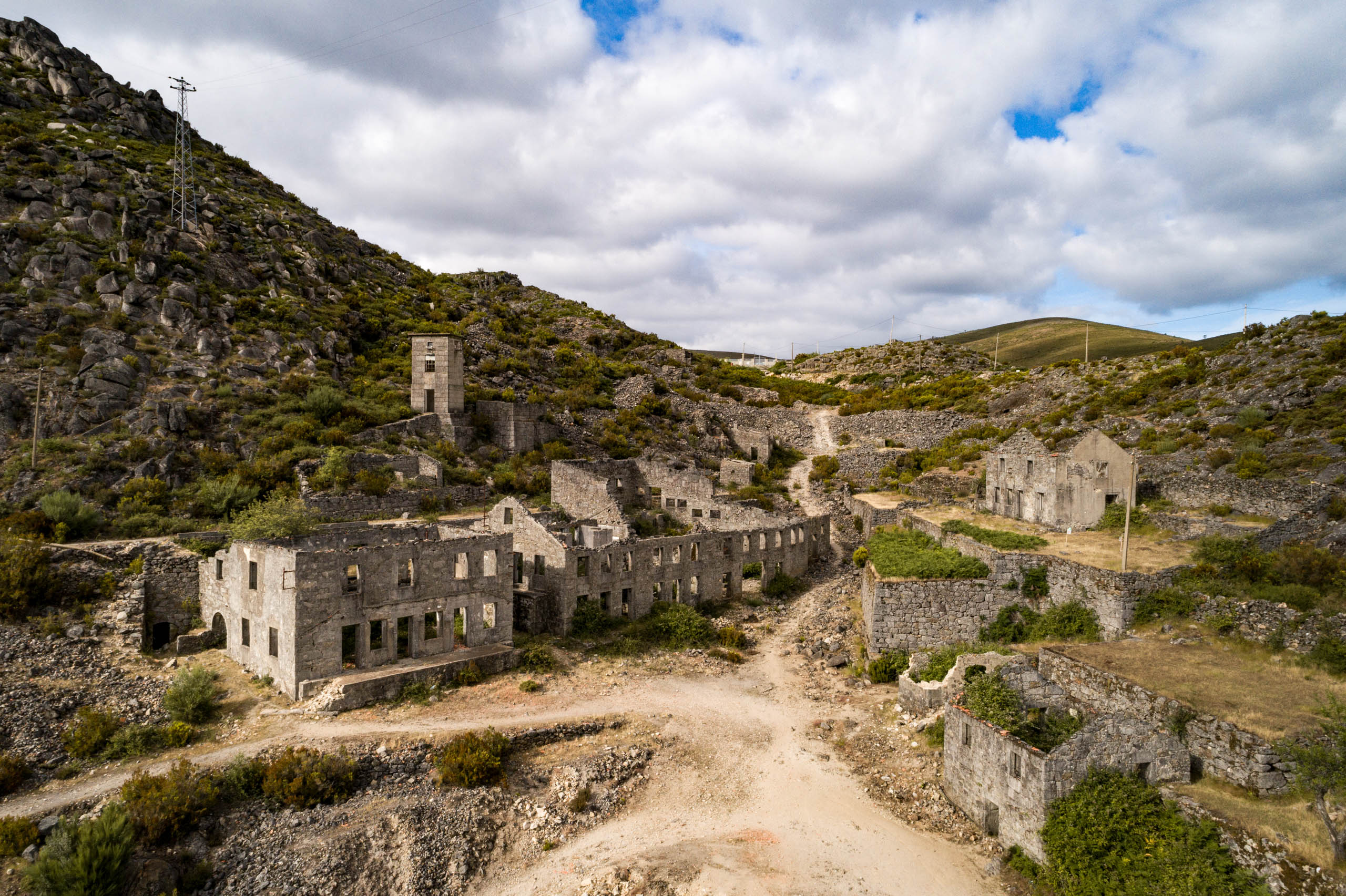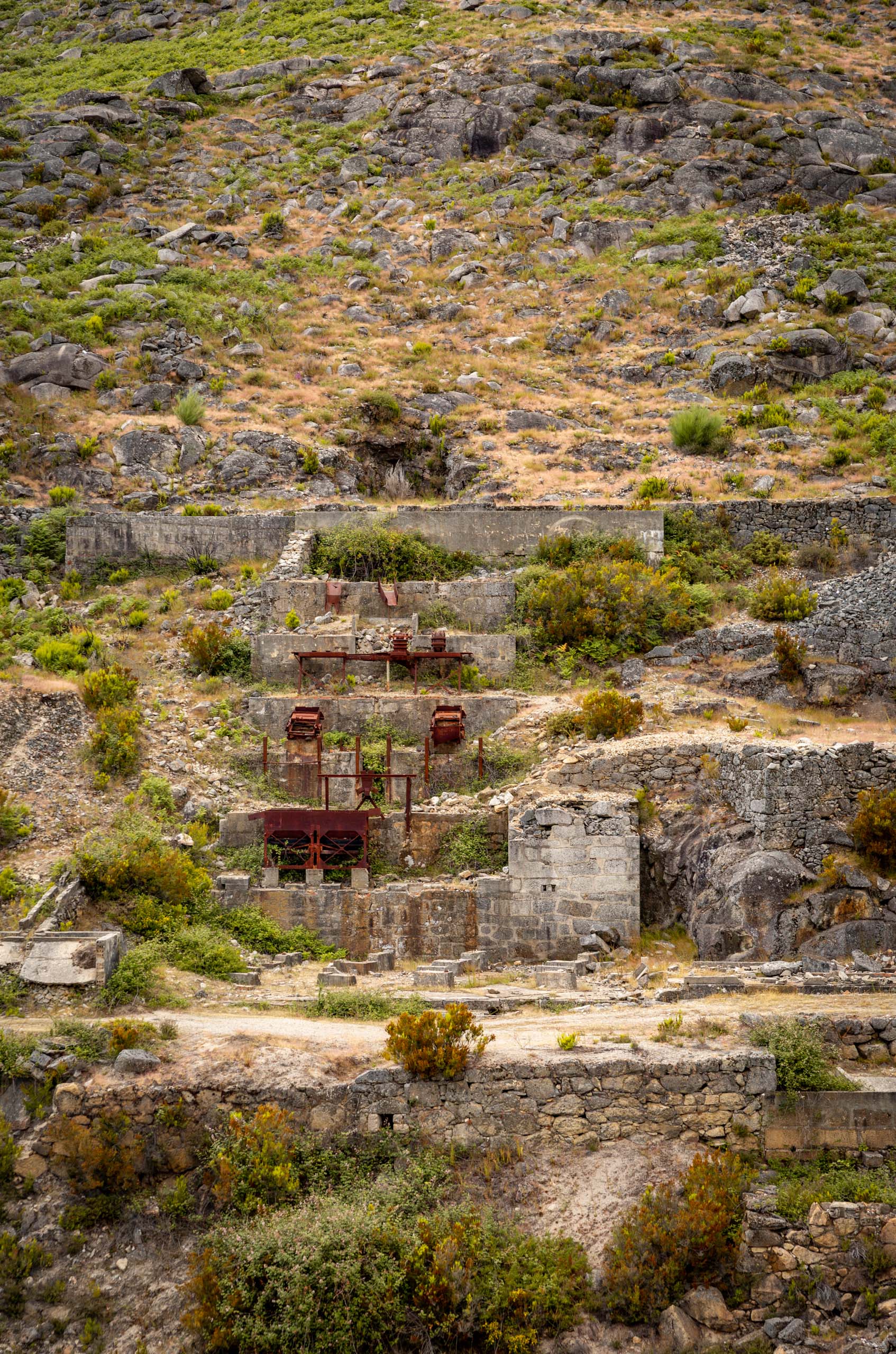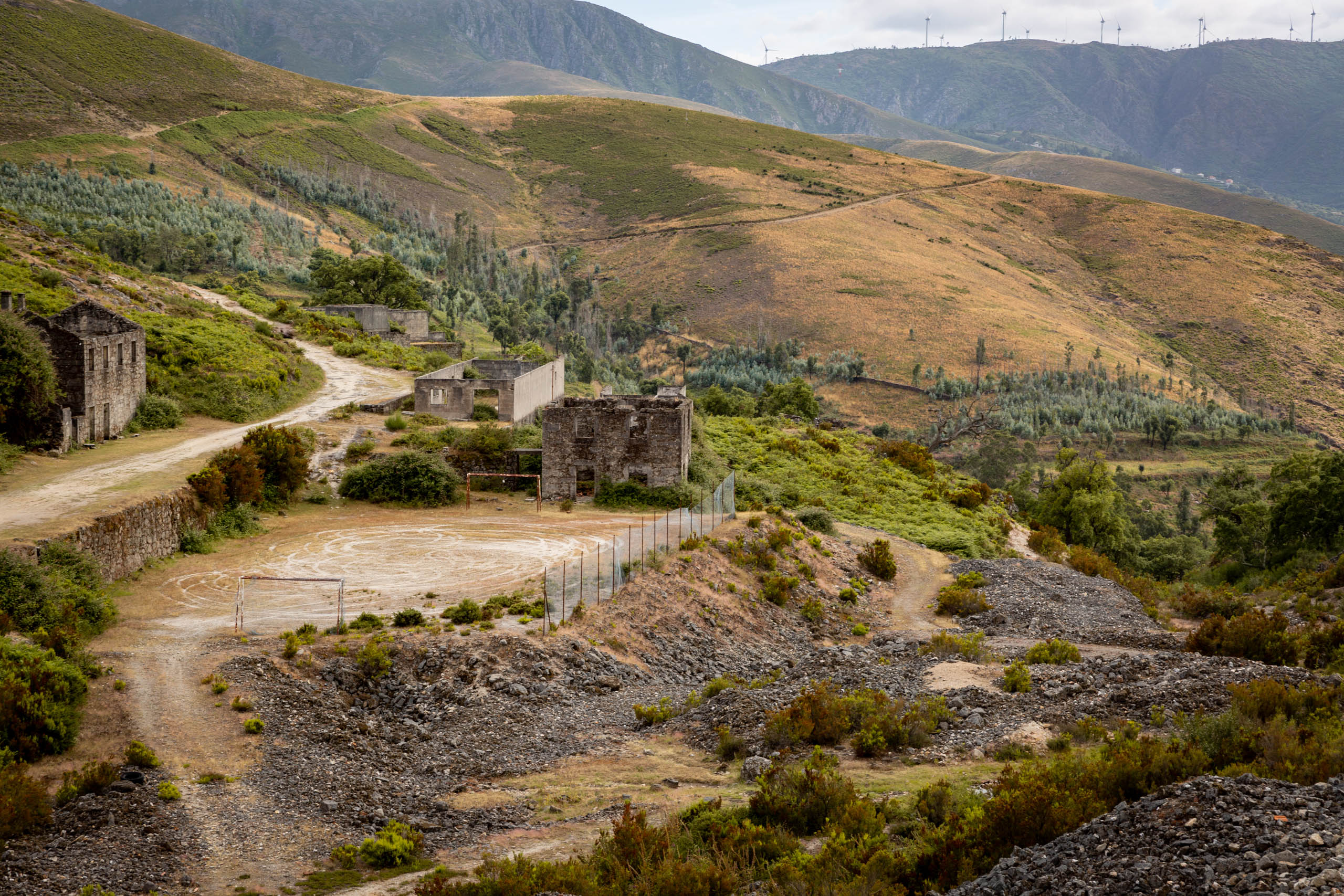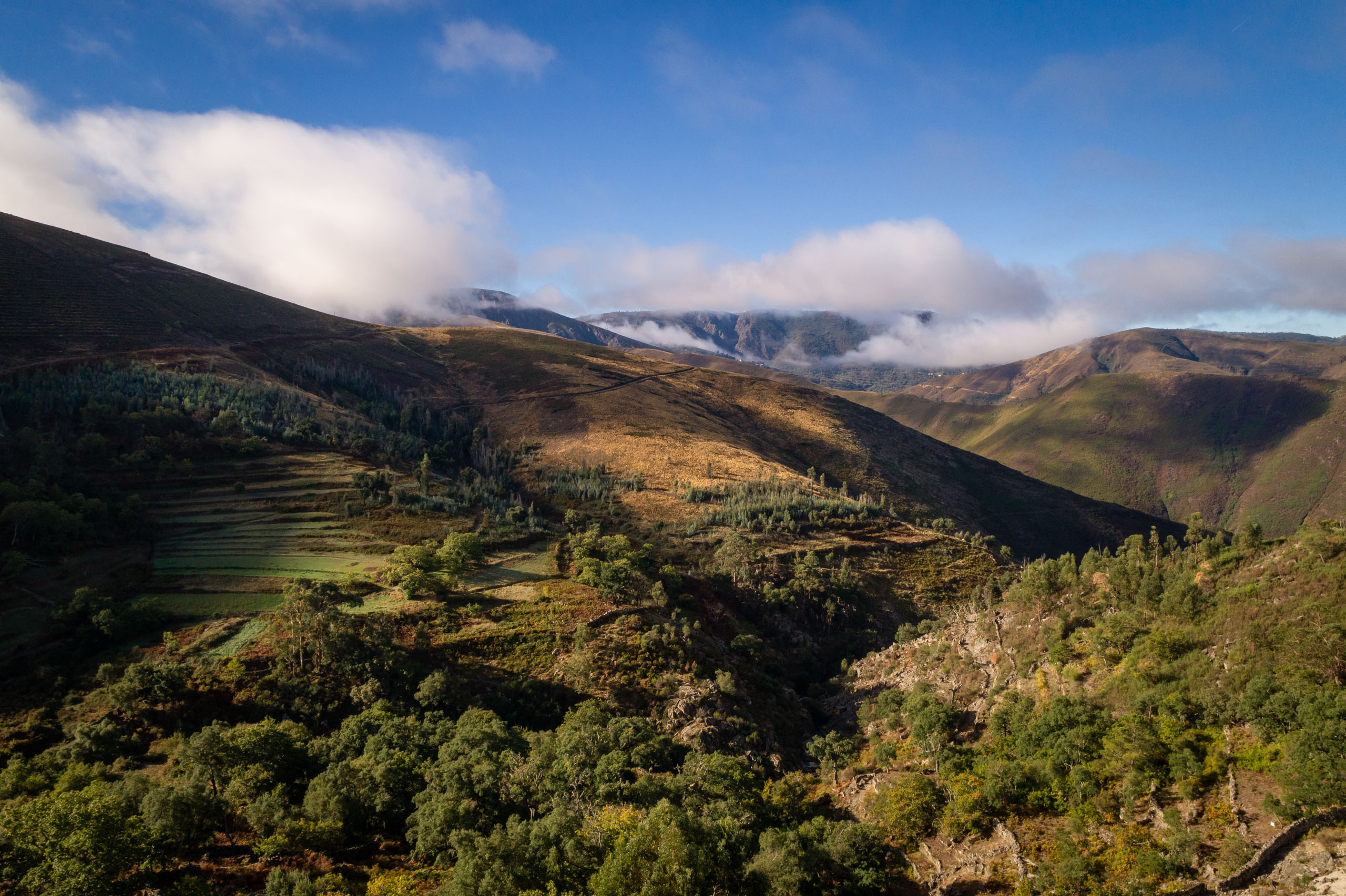Geosite 22 Regoufe Mines
Black gold for the British…
The Regoufe mines began to be exploited in 1915 by the Frenchman Gustave Thomas. During the Second World War, in 1941, the Companhia Portuguesa de Minas (Portuguese Mining Company) was set up and managed with British capital and administration. The “English Company”, as it became known, promoted various improvements in the region, such as the road link from Ponte de Telhe, the electrification of the village and the telephone line.
The most profitable part of the English concession in Regoufe became known as “Poça da Cadela”, a space immortalized by the various galleries and heaps, and by the 57 hectares of ruins of the exploration buildings. Today we can still see the technical and administrative facilities, further north, with a two-storey office building standing out. Opposite is a square, flanked by several buildings along the hillside, where the workshops, power station and warehouses used to operate. It is also easy to spot the laundry areas, a succession of tanks and machines arranged on the hillside, which close off the complex to the south. On the opposite side would be the residential area, a sort of neighborhood, with small compartments lined up, which would be the miners’ houses.
The entrances to the underground mining galleries appear, camouflaged, flanking the buildings. For safety reasons, you shouldn’t enter and progress along them. Hundreds of men have gone here in search of wolfram, the most common ore, obtained from wolframite minerals known as “black gold”.
The Regoufe mines are part of the Iter Hominis Mining Region route. By taking the PR13 and PR14 geotourist walking routes, you can get to know this geosite, which is also the stage for the “Ultra Trail da Serra da Freita” event.
This geosite is part of the itinerary B: Pelas Minas e Recantos Desconhecidos do Paiva.
Learn more about the Geosites Route .
Geological Information
The Regoufe granite is a small pluton with an outcrop of approximately 6 km2 and a circular geometry, slightly elongated in a NW-SE direction. The granite has a medium to coarse-grained porphyroid texture, mainly muscovite with the presence of scattered potassium feldspar megacrystals. The final phases of the granite intrusion are characterized by the circulation of hydrothermal fluids that allowed the precipitation of W-Sn minerals in quartz veins, which were subject to exploitation by means of gallery systems.
In the case of the Regoufe deposit, wolframite is the most frequent ore, with some cassiterite also occurring. Some sulphides were also identified, the main ones being arsenopyrite, sparelite (frequent in the quartz veins) and, less abundantly, pyrite. Next to the galleries and in the machinery areas are the residual materials from the mining activity, made up of material of different sizes, from large granite blocks to sands of different granulometries. A large part of the debris from the activity appears in some cases loose, filled mainly in the valleys where intermittent water flows.
The assessment of the environmental impact of the mining activity in Regoufe has been carried out in various research projects over the last 20 years, using geological, geochemical (water, soil and organic matter) and geophysical data to determine the potential for contamination and the areas affected.
Interests
Use
Relevance
Coordinates Regoufe Mines
Photos and Videos Gallery
Experience 360º
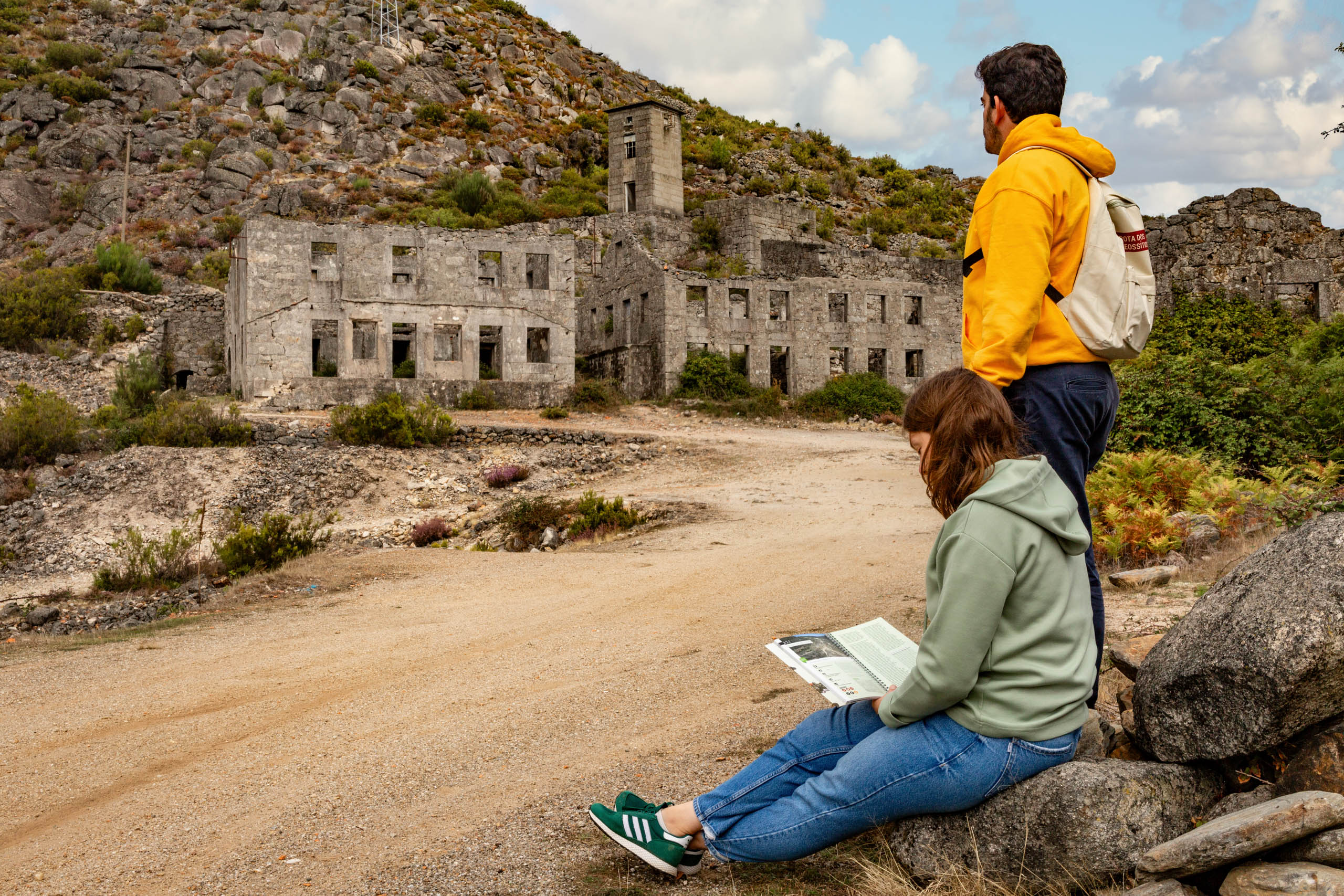

Minas de Regoufe
